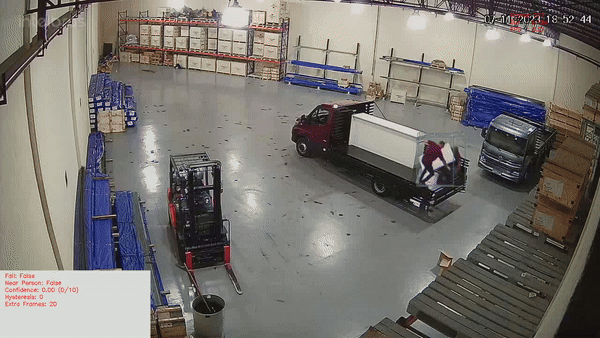Slip and Fall Detection & Prevention
Protect your workforce and reduce liability with AI-powered slip and fall detection. Get instant alerts, comprehensive analytics, and documented compliance.

The Challenge
Slip and fall incidents remain one of the leading causes of workplace injuries and liability claims:
- $70 billion annual cost to U.S. businesses
- 30% of workplace injuries are slip and fall related
- 95% of serious falls require hospitalization
- Average claim costs $20,000 in direct expenses
Transform Your Safety Program
VisionAI's slip and fall detection system provides:
1. Immediate Response
- Real-time fall detection across your facility
- Instant alerts to safety personnel
- Automated emergency response protocols
- Critical response time reduction
2. Comprehensive Coverage
- Monitor high-risk areas 24/7
- Cover multiple locations from one dashboard
- Protect workers in isolated areas
- Support for all lighting conditions
3. Risk Prevention
- Identify high-risk areas and patterns
- Proactive hazard notifications
- Slip and trip prevention analytics
- Custom safety zone monitoring
Industry Applications
Manufacturing & Warehousing
- Loading dock monitoring
- Wet floor detection
- High-traffic area surveillance
- Material handling zones
Construction
- Scaffold and ladder monitoring
- Open pit protection
- Multi-level site coverage
- Equipment area safety
Healthcare & Assisted Living
- Patient fall prevention
- Bathroom and corridor monitoring
- Quick staff response enablemen
- Privacy-compliant monitoring
Retail & Commercial
- Customer safety monitoring
- Back-of-house protection
- Loading area surveillance
- Maintenance alert system
Business Benefits
✓ Reduce Incidents
- Up to 60% reduction in slip and fall incidents
- Prevent serious injuries through early detection
- Minimize workplace disruptions
✓ Lower Costs
- Reduce insurance premiums
- Decrease worker compensation claims
- Minimize litigation expenses
✓ Improve Compliance
- Automated incident documentation
- OSHA compliance support
- Risk assessment reports
✓ Enhance Operations
- Optimize safety protocols
- Improve response procedures
- Data-driven safety decisions
Success Story
"After implementing VisionAI's slip and fall detection, we saw a 45% reduction in incident response times and a 30% decrease in our insurance premiums. The system paid for itself within the first year."
- Safety Director, Major Distribution Center
Easy Implementation
-
Quick Setup
- Uses existing security cameras
- No additional hardware needed
- Privacy-compliant installation
-
Seamless Integration
- Works with your current systems
- Custom alert configurations
- Mobile app access
-
Ongoing Support
- 24/7 technical assistance
- Regular system updates
- Dedicated success manager
Learn More
Contact Information
contact_phone Sales Inquiries
Get in touch with our sales team for demos and pricing information.
- Email: sales@visionify.ai
- Phone: +1 720-449-1124
support_agent Technical Support
Need help? Visit our support portal or contact our technical team.
calendar_month Schedule a Demo
See VisionAI in action with a personalized demo from our team.